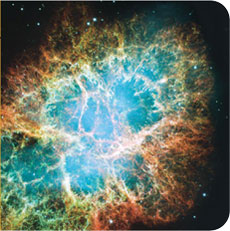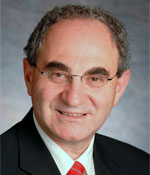
October 10, 2014

The Opto-Electronic Physics Which Broke the Efficiency Record in Solar Systems
University of California, Berkely
11 a.m. in TI Auditorium (ECSS 2.102). Refreshments at 10:45 a.m. in the lobby.
 Abstract: Solar cell science and technology is changing. New efficiency records have been set. Alta Devices has reached 28.8% efficiency in a thin film single-junction cell at 1-sun, and 30.8% efficiency in a thin-film dual junction cell at 1-sun. Counter-intuitively, efficient external fluorescence is a necessity for approaching the ultimate limits. A great Solar Cell also needs to be a great Light Emitting Diode. Why would a solar cell, intended to absorb light, benefit from emitting light? Although it is tempting to equate light emission with loss, paradoxically, light emission actually improves the open-circuit voltage, and the efficiency. The single-crystal thin film technology that achieved these high efficiencies is created by epitaxial lift off, and can be produced at cost well below the other less efficient thin film solar technologies. The path is now open to a 30% efficient photovoltaic technology that can be produced at low cost.
Abstract: Solar cell science and technology is changing. New efficiency records have been set. Alta Devices has reached 28.8% efficiency in a thin film single-junction cell at 1-sun, and 30.8% efficiency in a thin-film dual junction cell at 1-sun. Counter-intuitively, efficient external fluorescence is a necessity for approaching the ultimate limits. A great Solar Cell also needs to be a great Light Emitting Diode. Why would a solar cell, intended to absorb light, benefit from emitting light? Although it is tempting to equate light emission with loss, paradoxically, light emission actually improves the open-circuit voltage, and the efficiency. The single-crystal thin film technology that achieved these high efficiencies is created by epitaxial lift off, and can be produced at cost well below the other less efficient thin film solar technologies. The path is now open to a 30% efficient photovoltaic technology that can be produced at low cost.
Suggested Reading:
"Intense Internal and External Fluorescence as Solar Cells Approach the Shockley-Queisser Efficiency Limit", O. D. Miller, Eli Yablonovitch, and S. R. Kurtz, IEEE J. Photovoltaics, vol. 2, pp. 303-311 (2012).
"The Opto-Electronics of Solar Cells", E. Yablonovitch and O. D. Miller, IEEE Photonics Society Newsletter, vol. 27, No. 1, p. 4, (February 2013)
Dr. Eli Yablonovitch is Director of the NSF Center for Energy Efficient Electronics Science (E3S), a multi-university cen¬ter based at Berkeley. After a career in the industry and universities, he is now Professor of Electrical Engineering and Computer Sciences at UC Berkeley, where he holds the James and Katherine Lau Chair in Engineering. He contributed the 4n2 light-trapping factor to solar cells that is used commercially in most solar panels world-wide. He introduced the benefit of strained quantum well lasers, an idea that is employed widely in most semiconductor lasers. He is re¬garded as a Father of the Photonic Band Gap concept and coined the term "Photonic Crystal".
Professor Yablonovitch is a Fellow of the Optical Society of America, the IEEE, and the American Physical Society. He was elected a Member of the National Academy of Engineering, the National Academy of Sciences, the American Acad¬emy of Arts & Sciences, and Foreign Member of the Royal Society of London. He has been awarded the Adolf Lomb Medal, the W. Streifer Scientific Achievement Award, the R.W. Wood Prize, the Julius Springer Prize, the IET Mountbat¬ten Medal (UK), the IEEE Photonics Award, the Harvey Prize (Israel), and the Rank Prize (UK). He also has an honorary Ph.D. from the Royal Institute of Technology, Stockholm, Sweden, and from the Hong Kong University of Science & Technology.
For more information,
contact Jayar Medlock
at 972.883.2236 or
[email protected]
Updated:
January 27, 2015
Copyright © 2011 The University of Texas at Dallas

